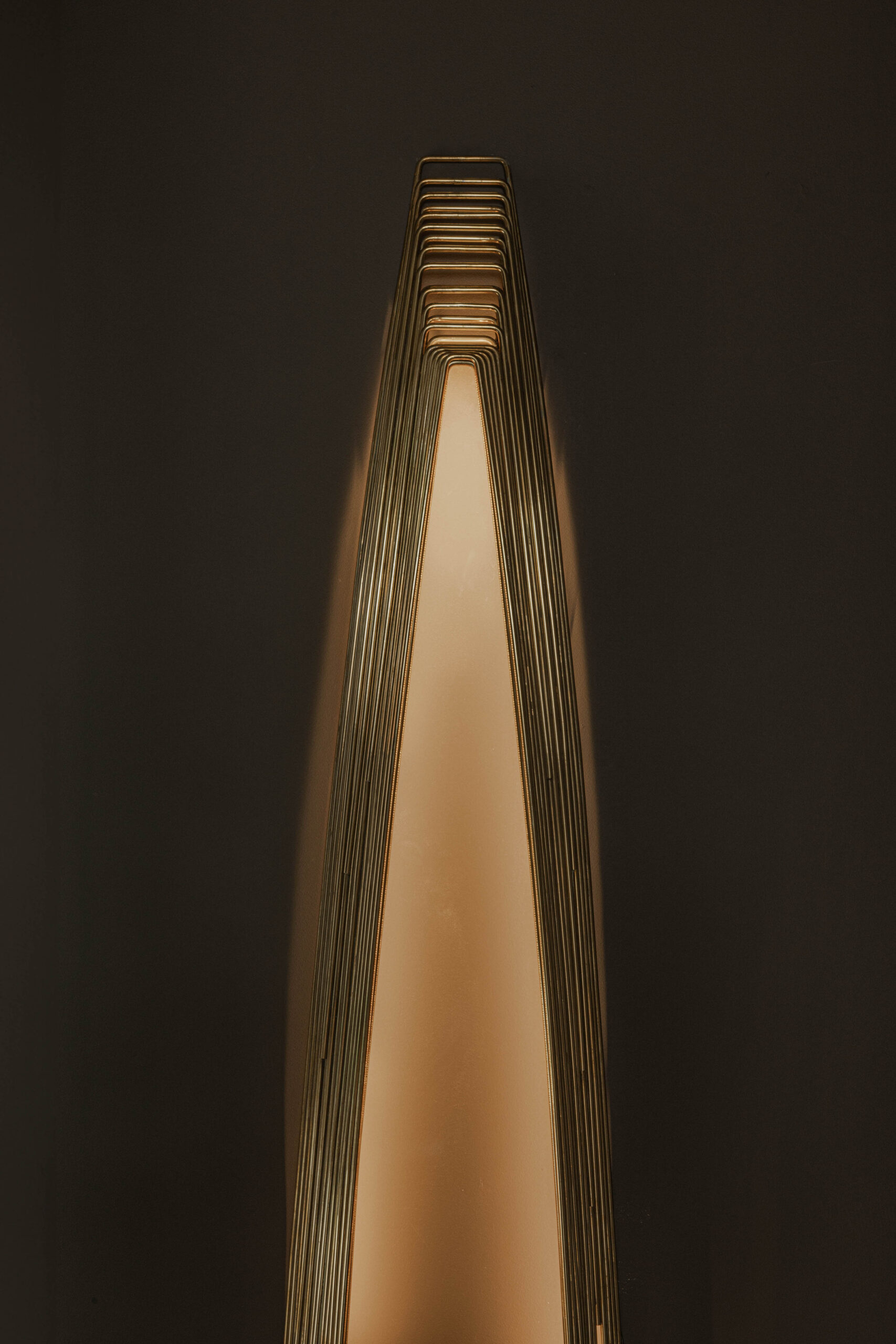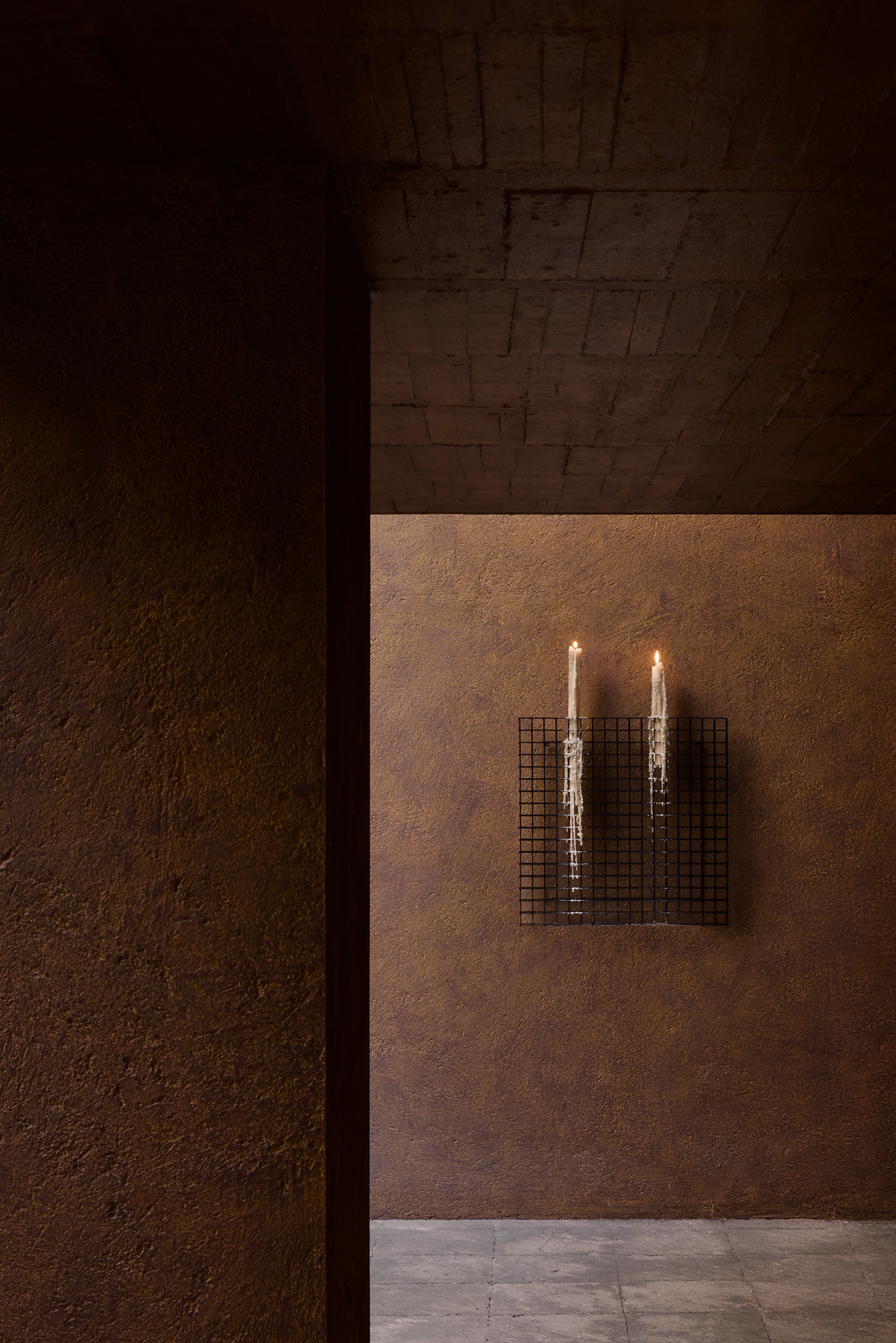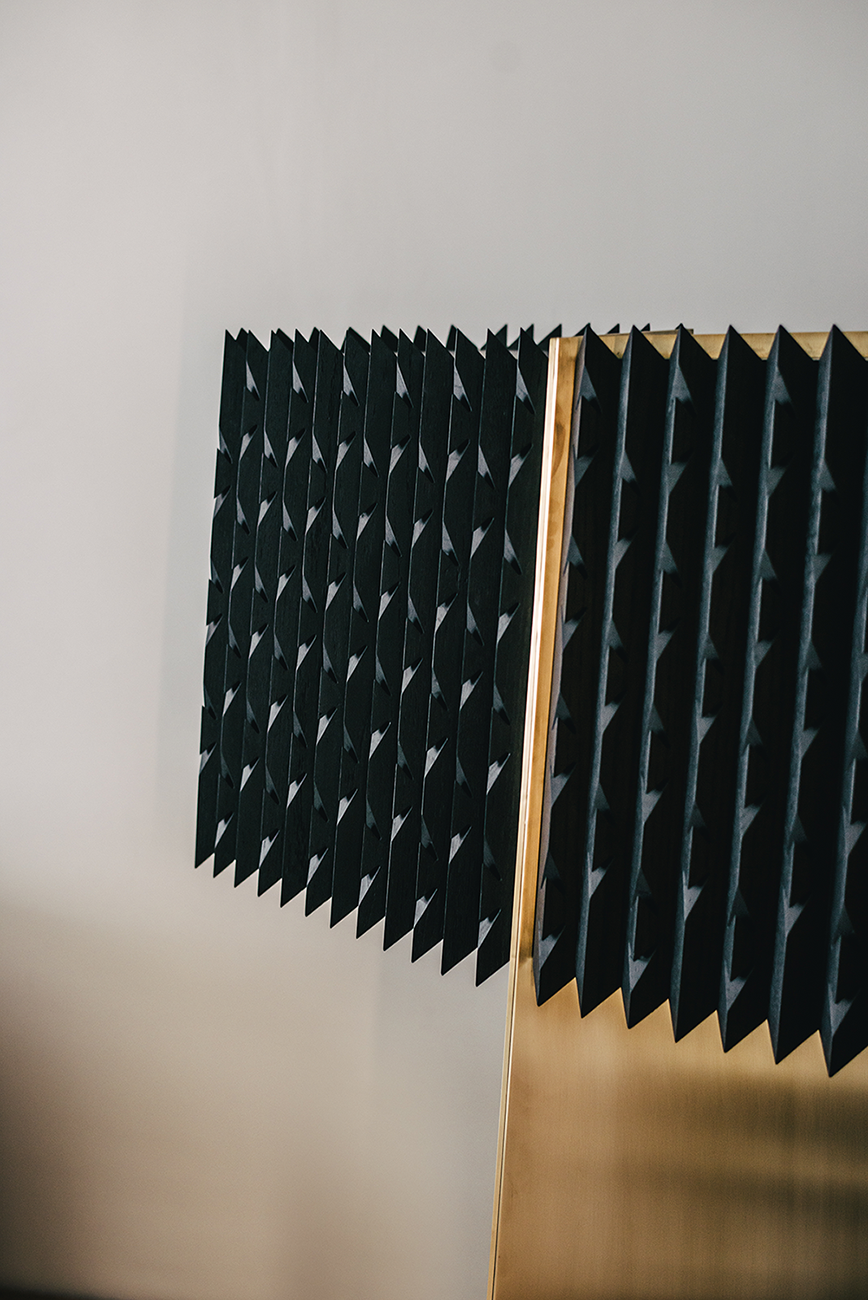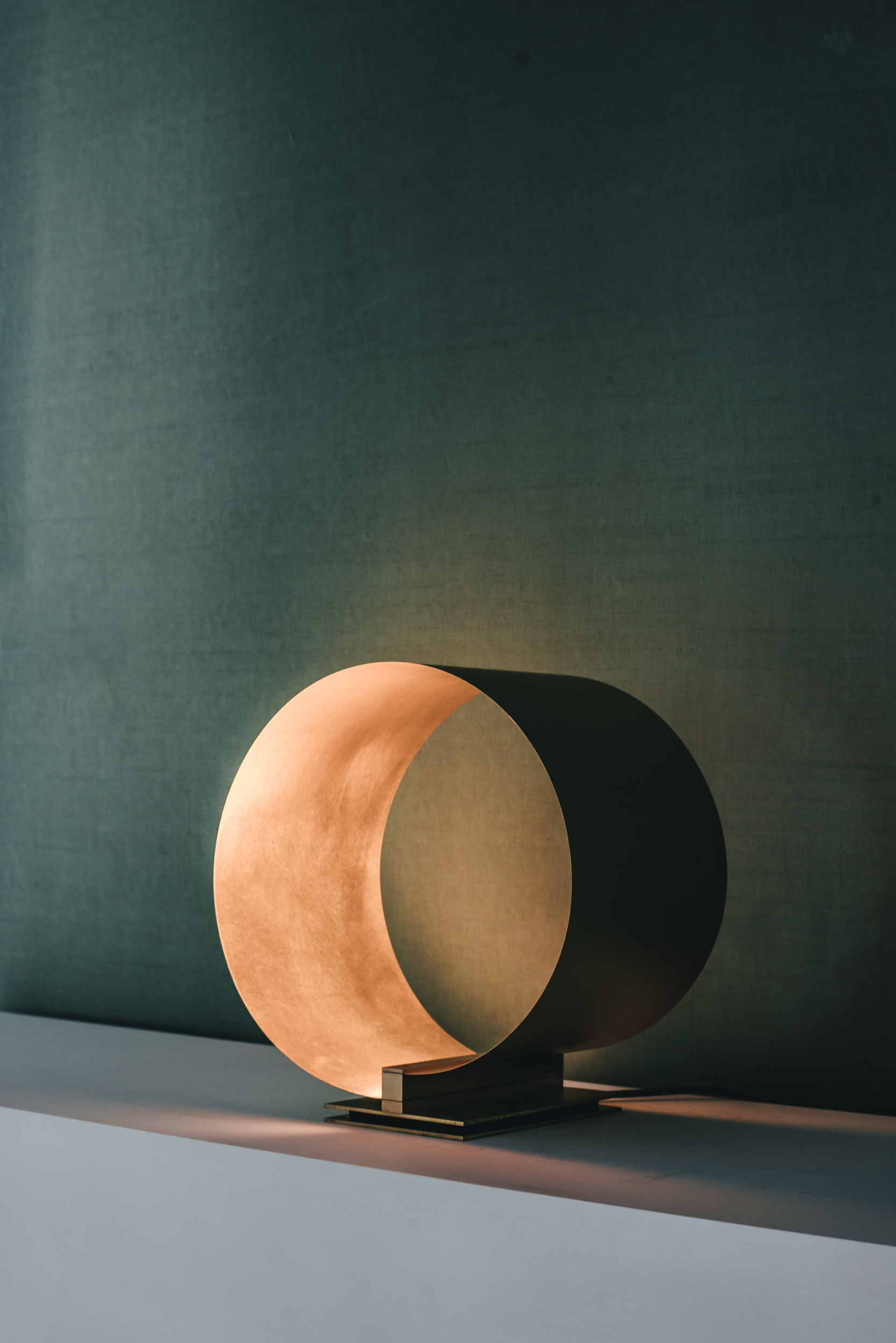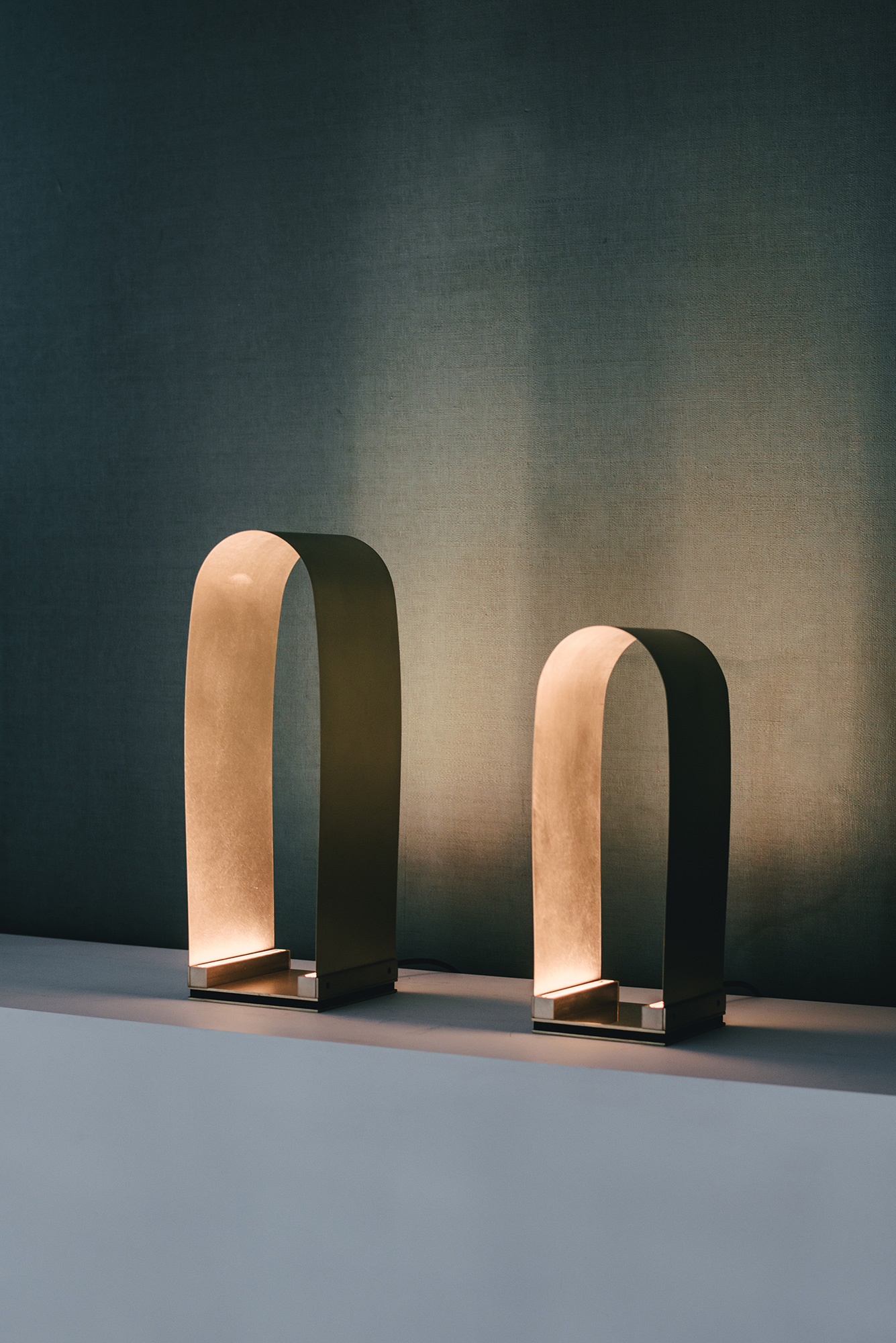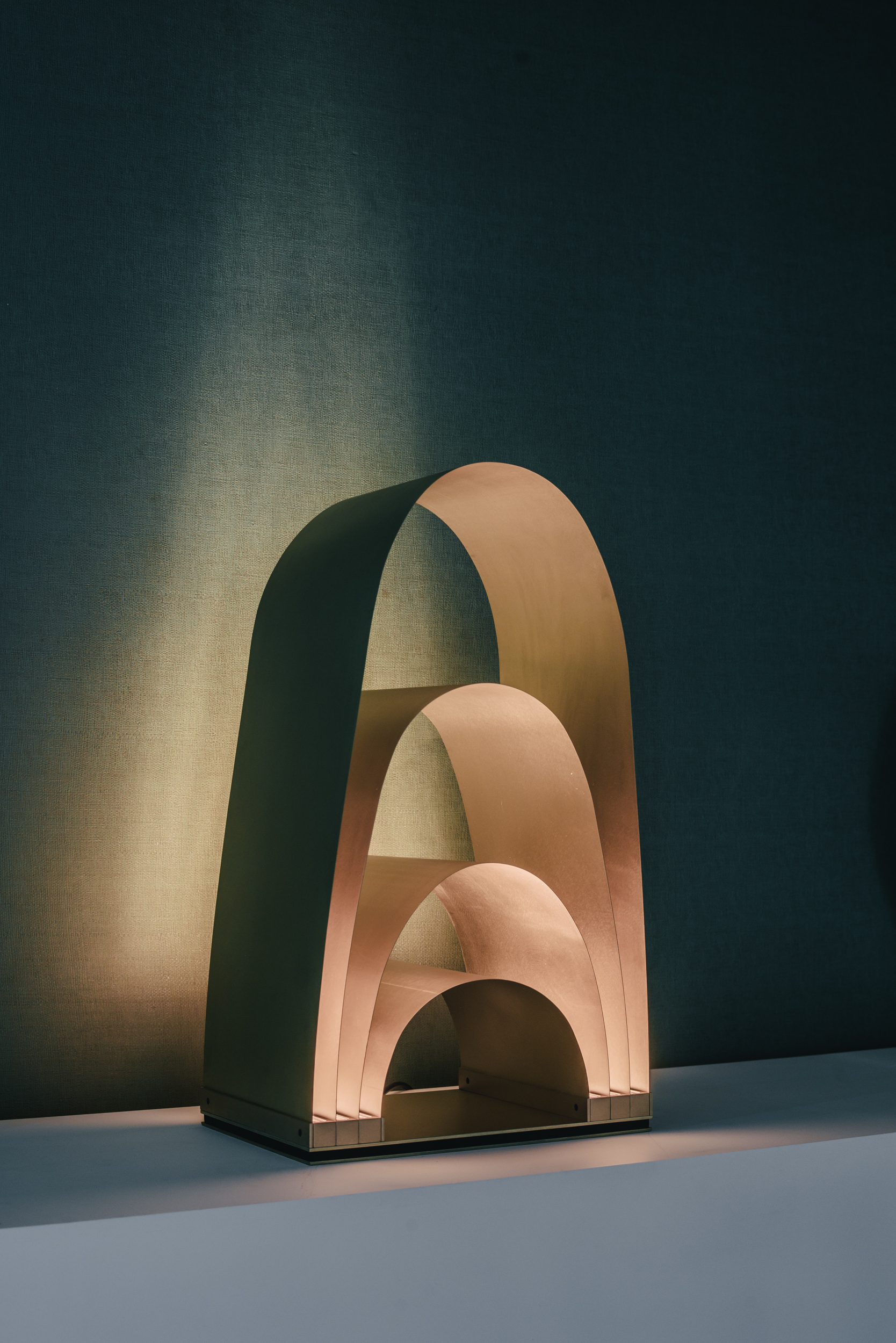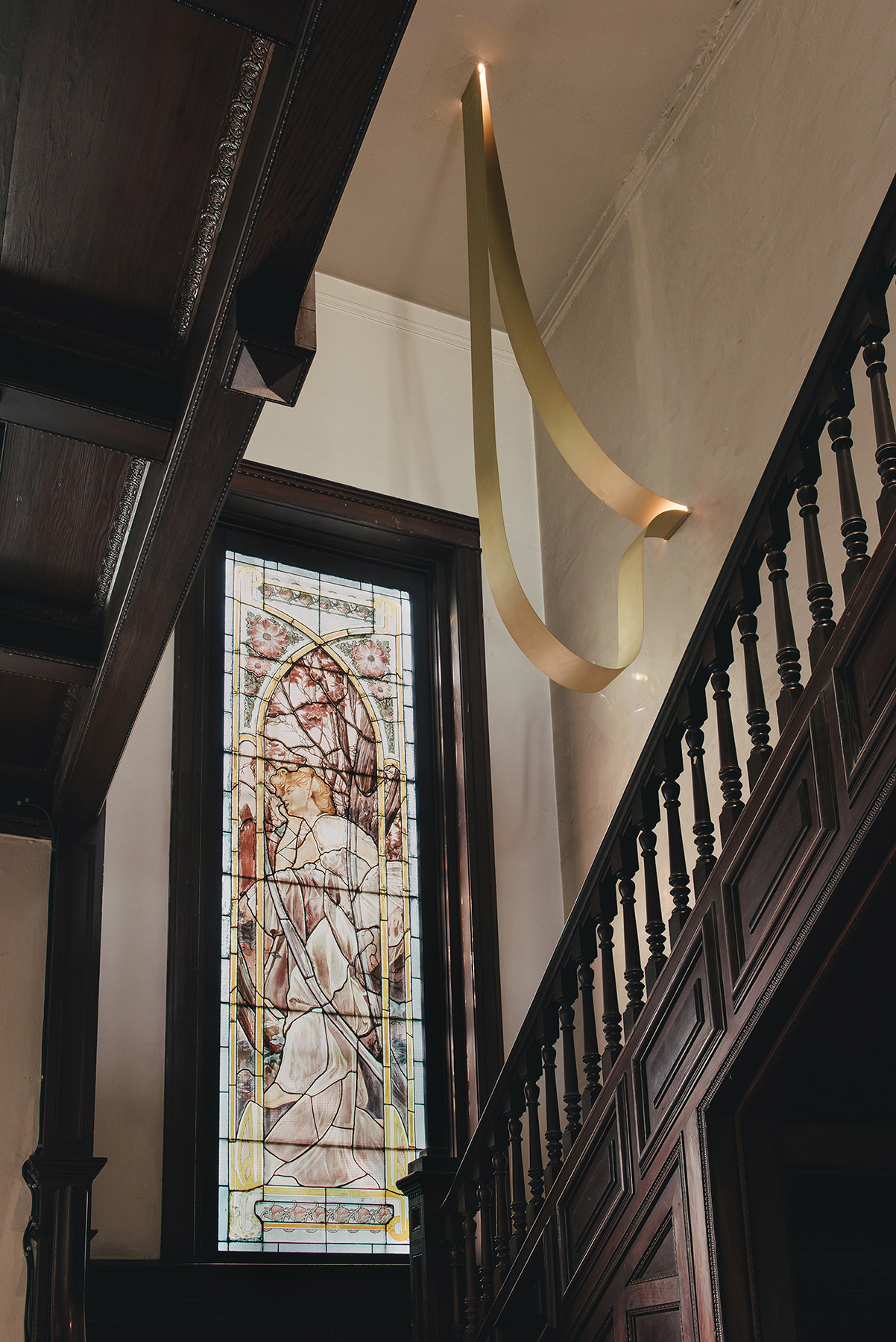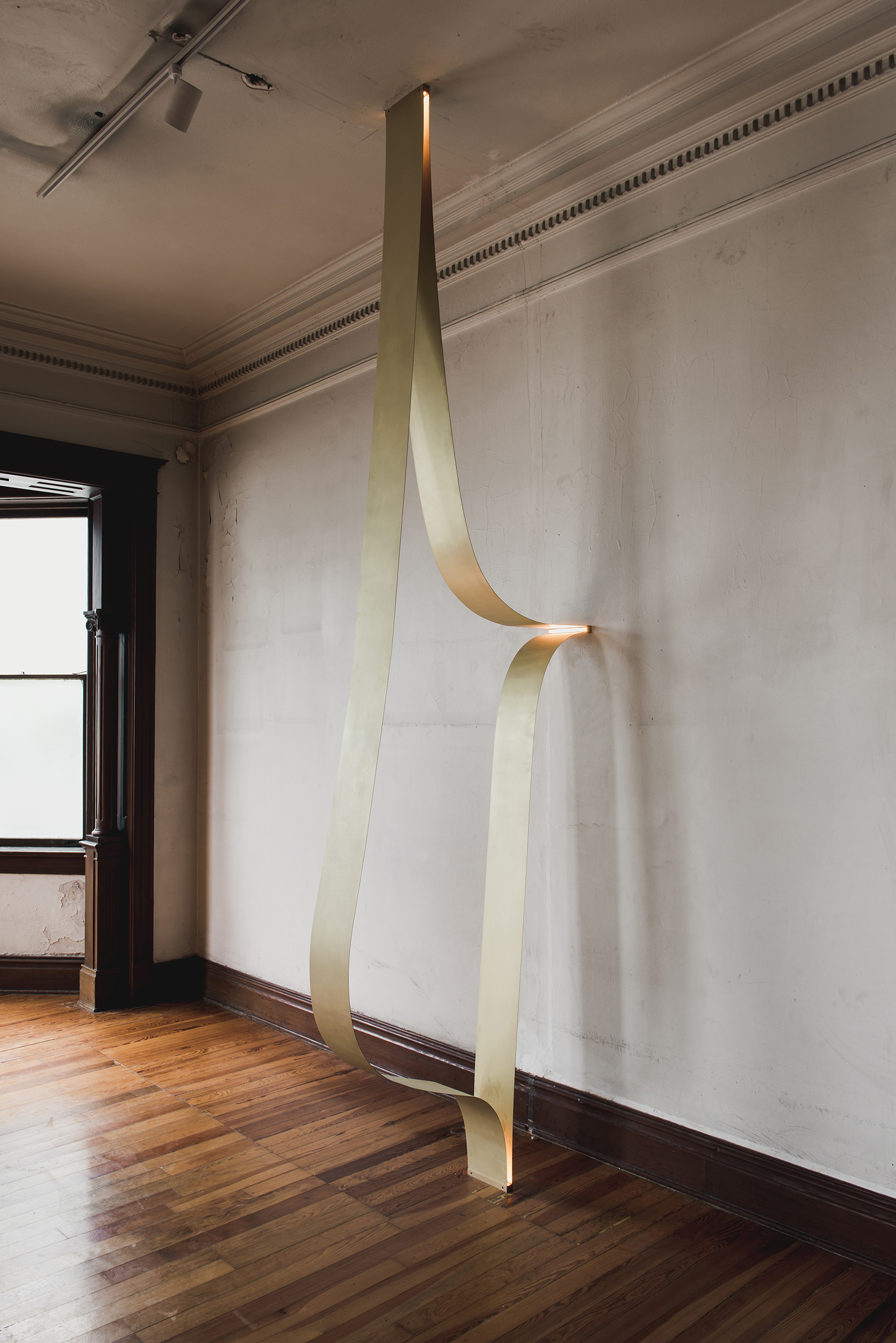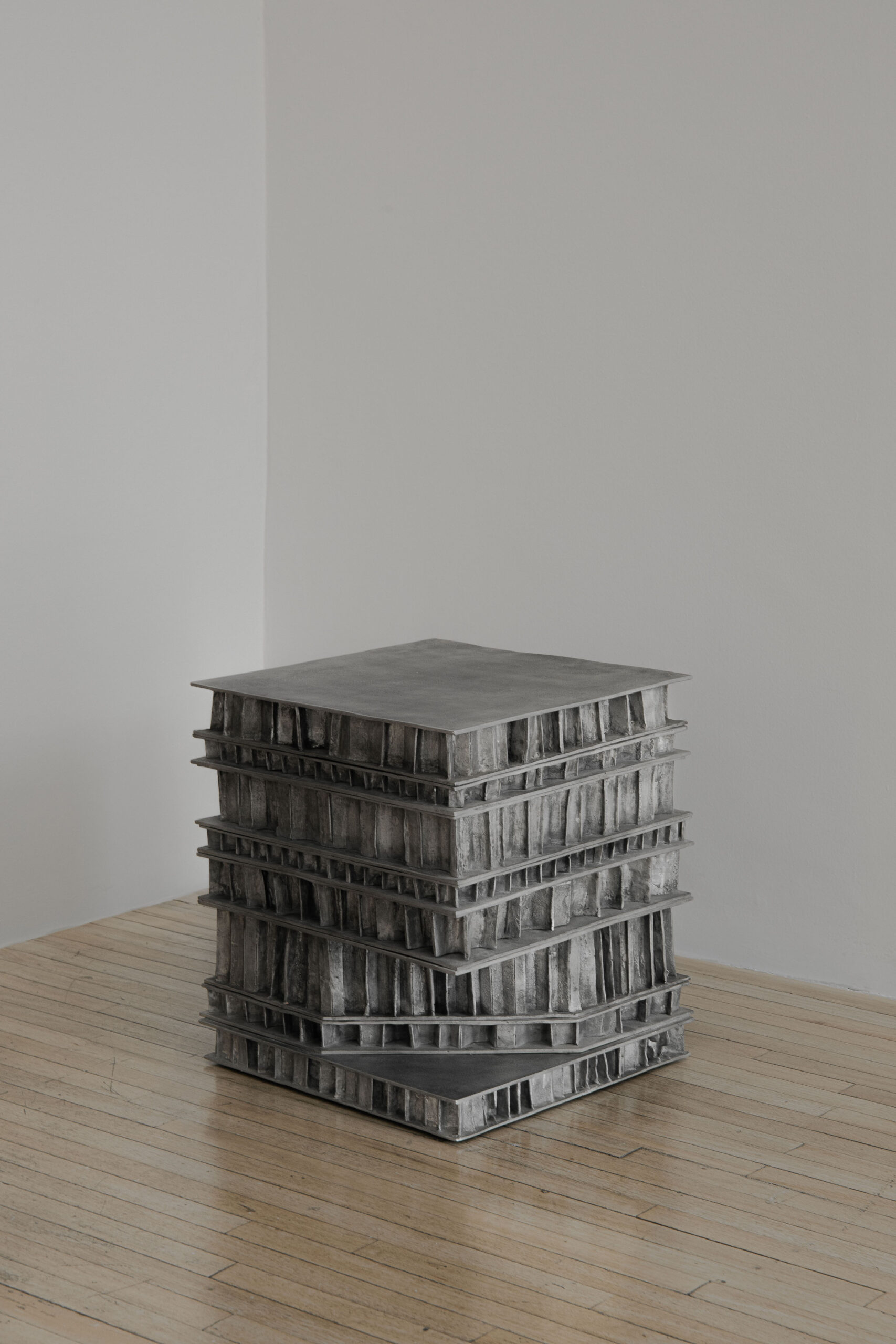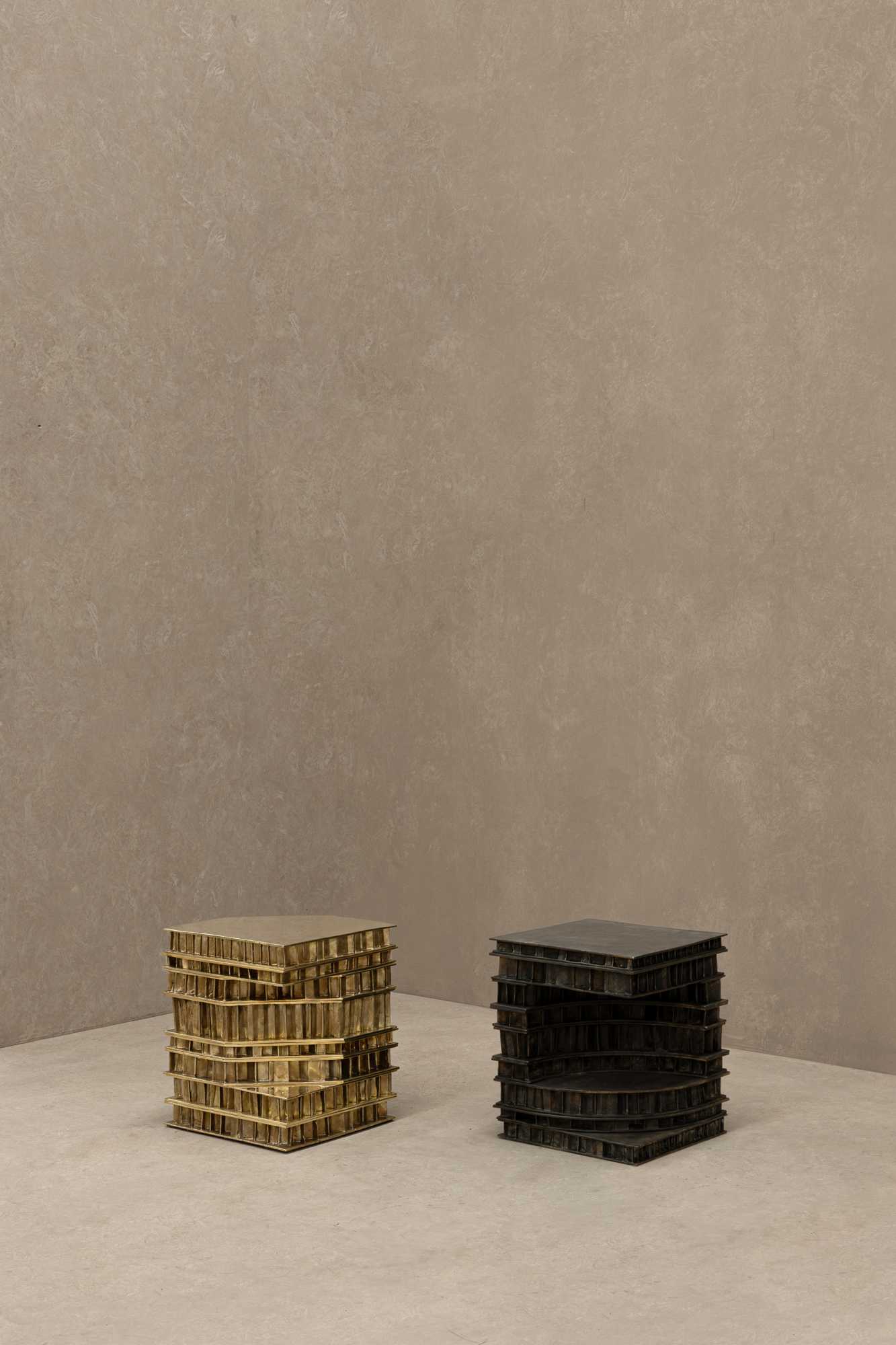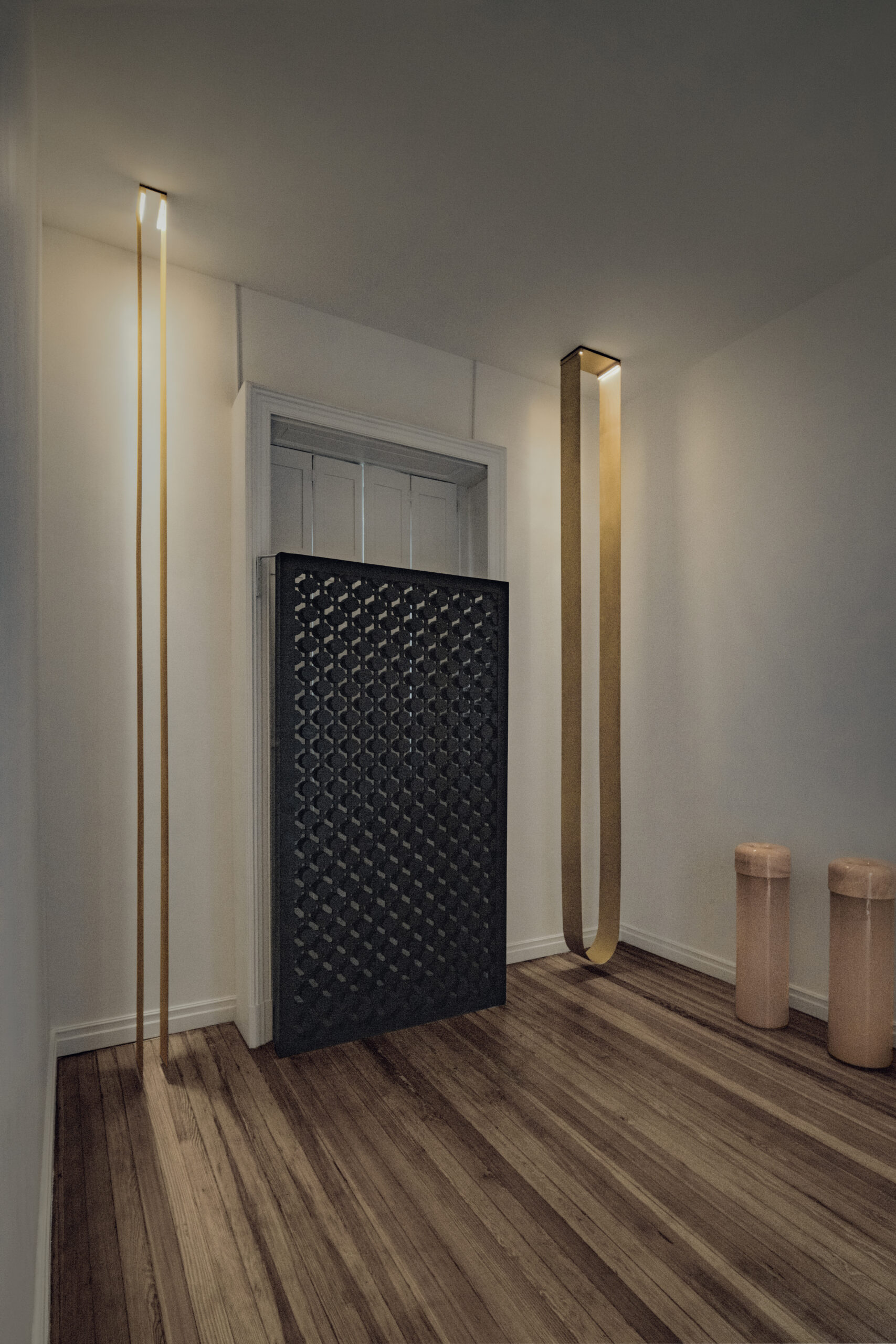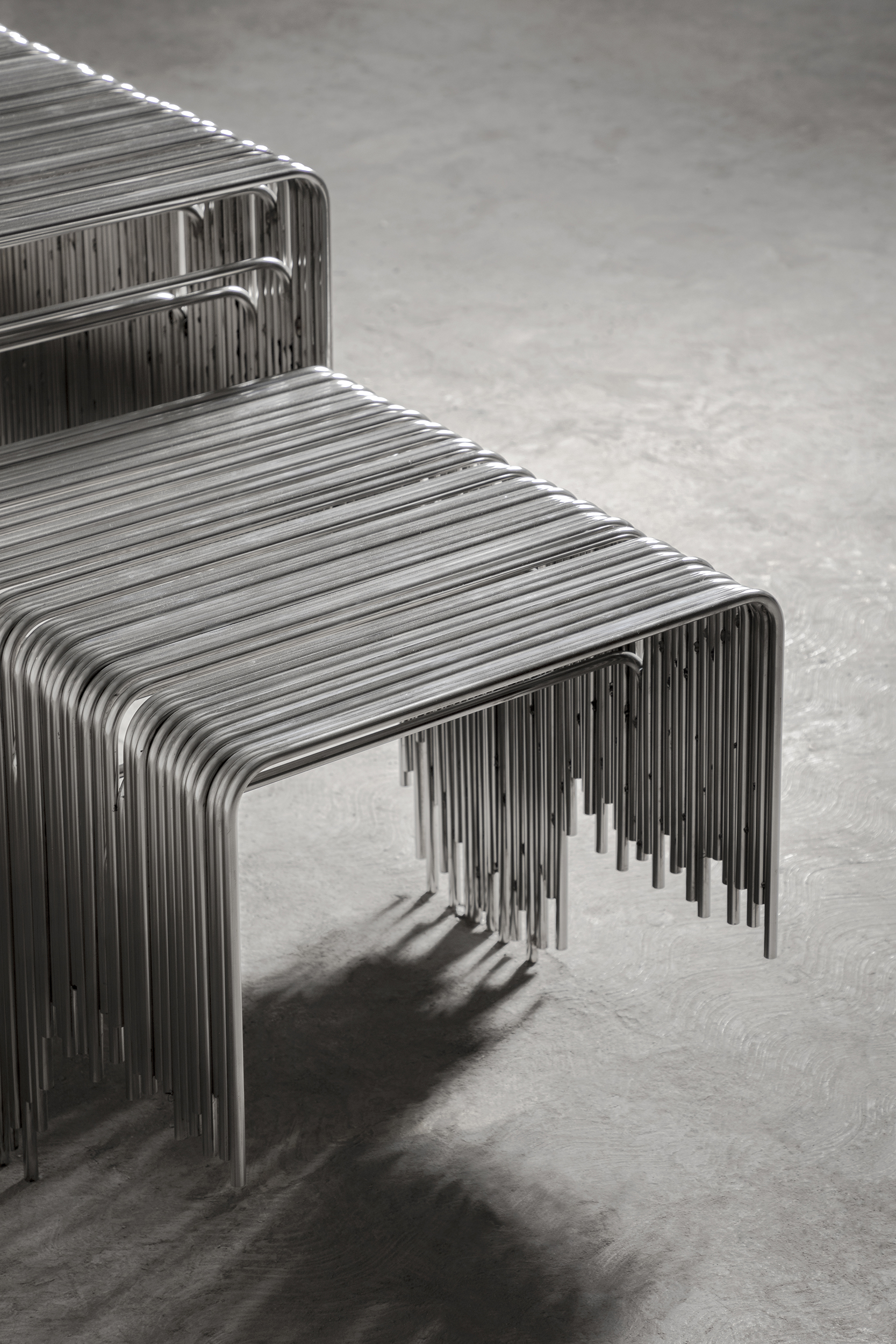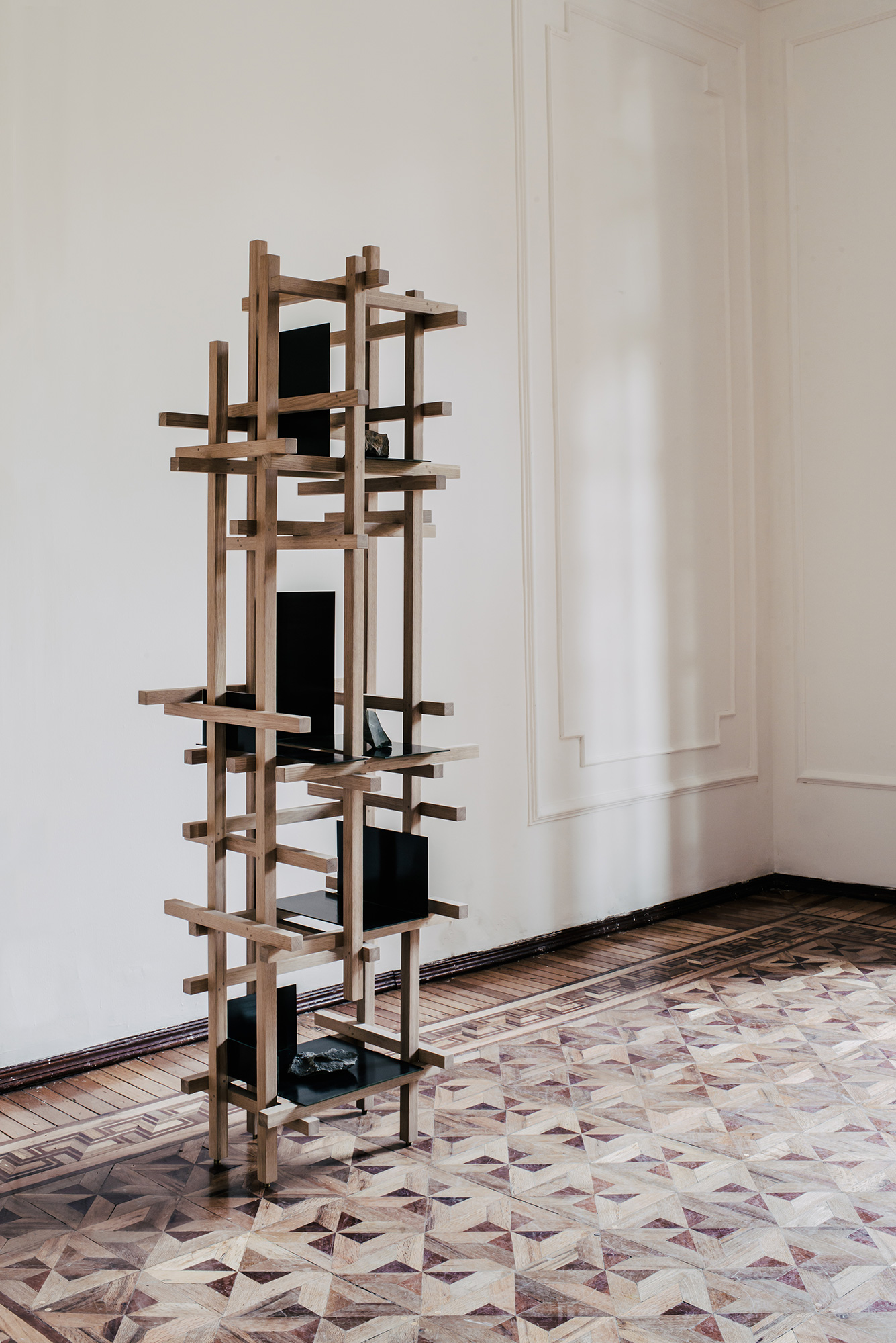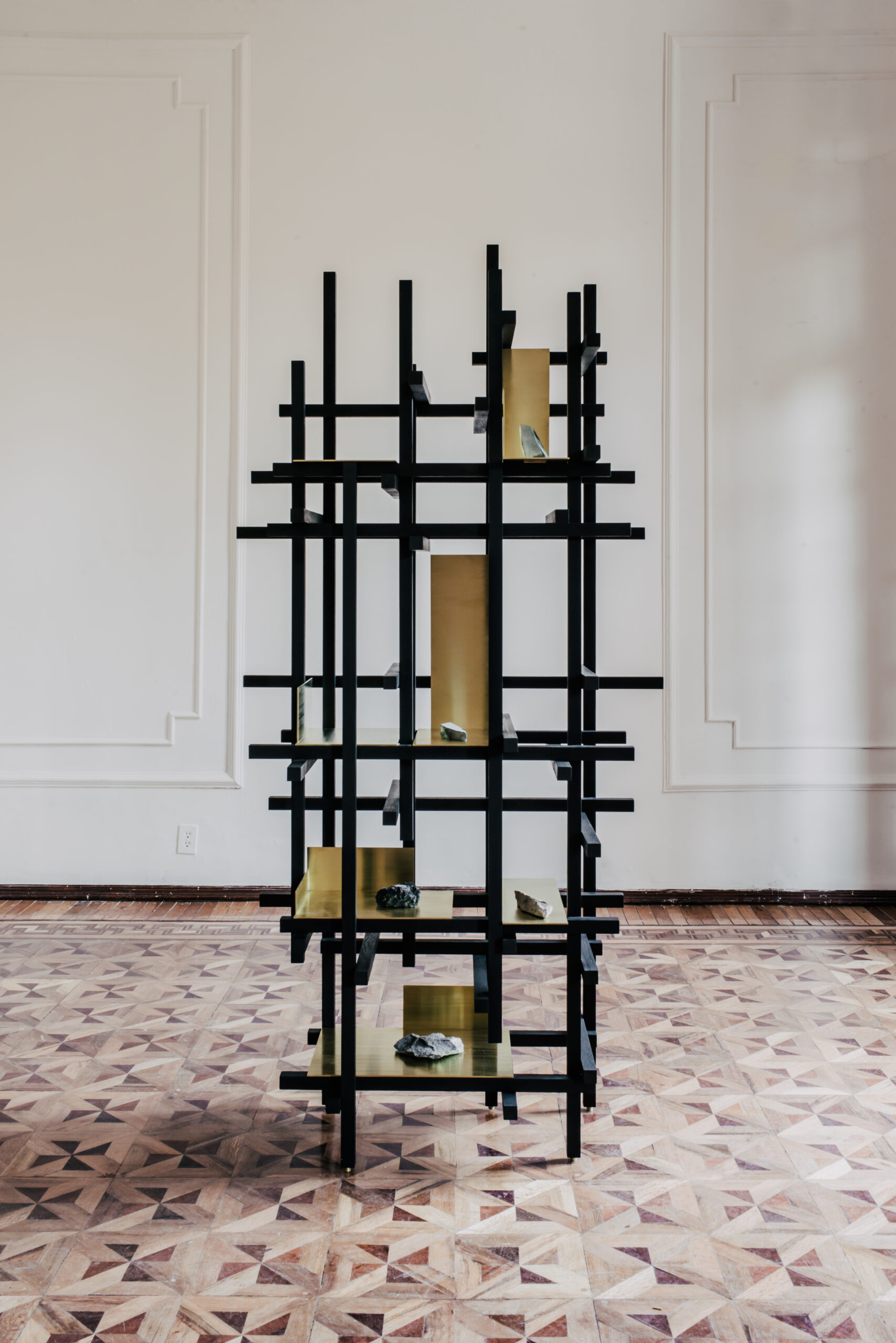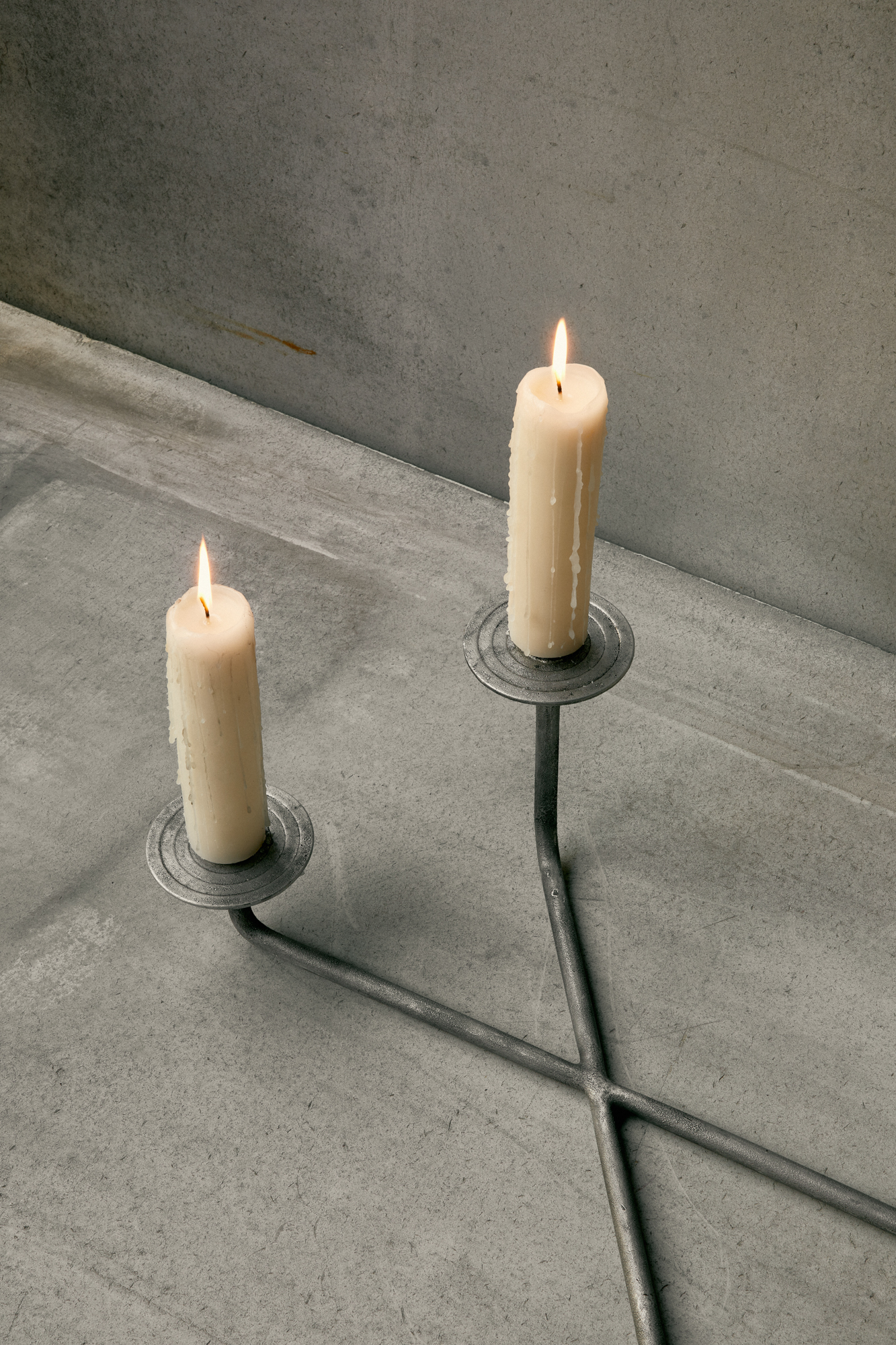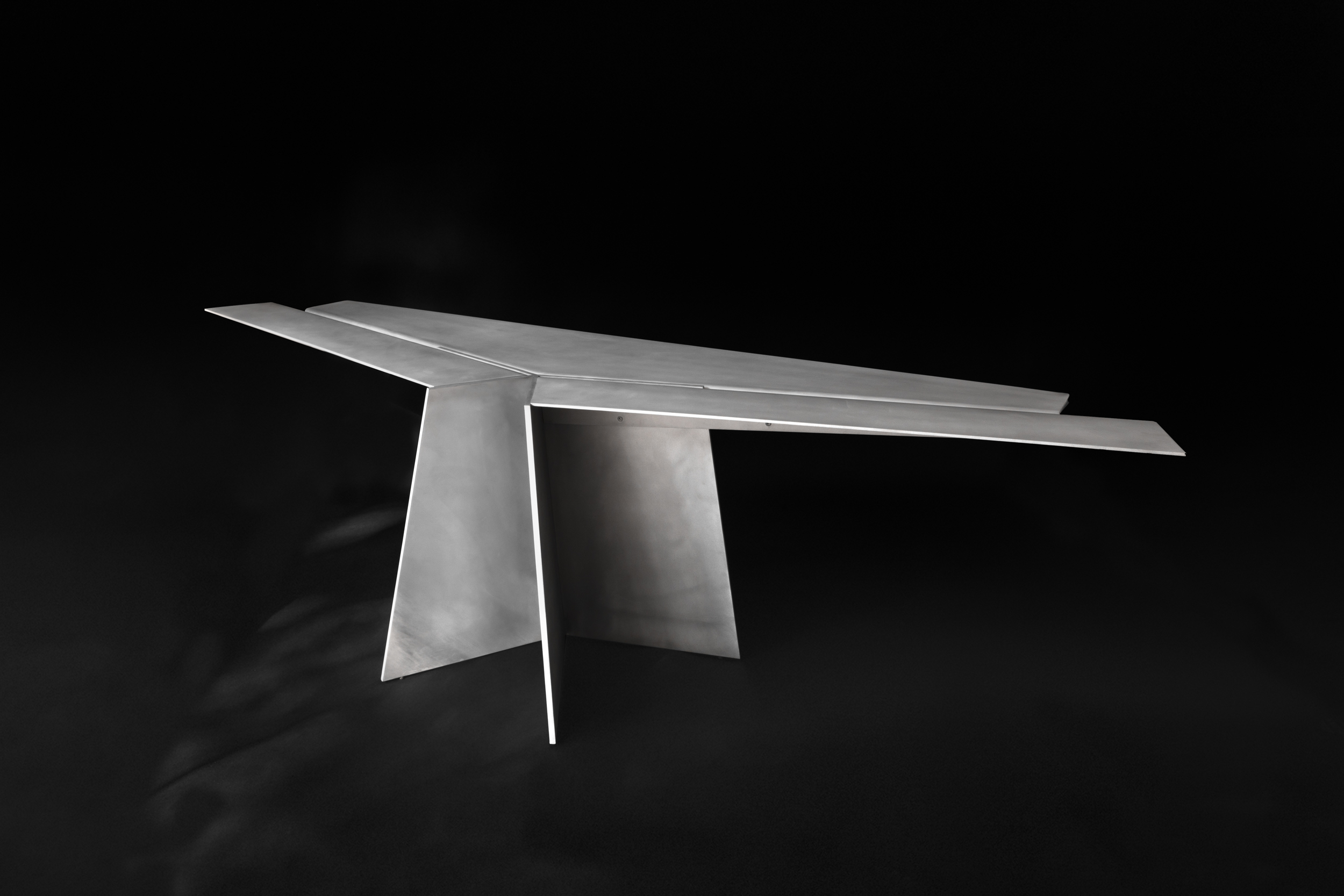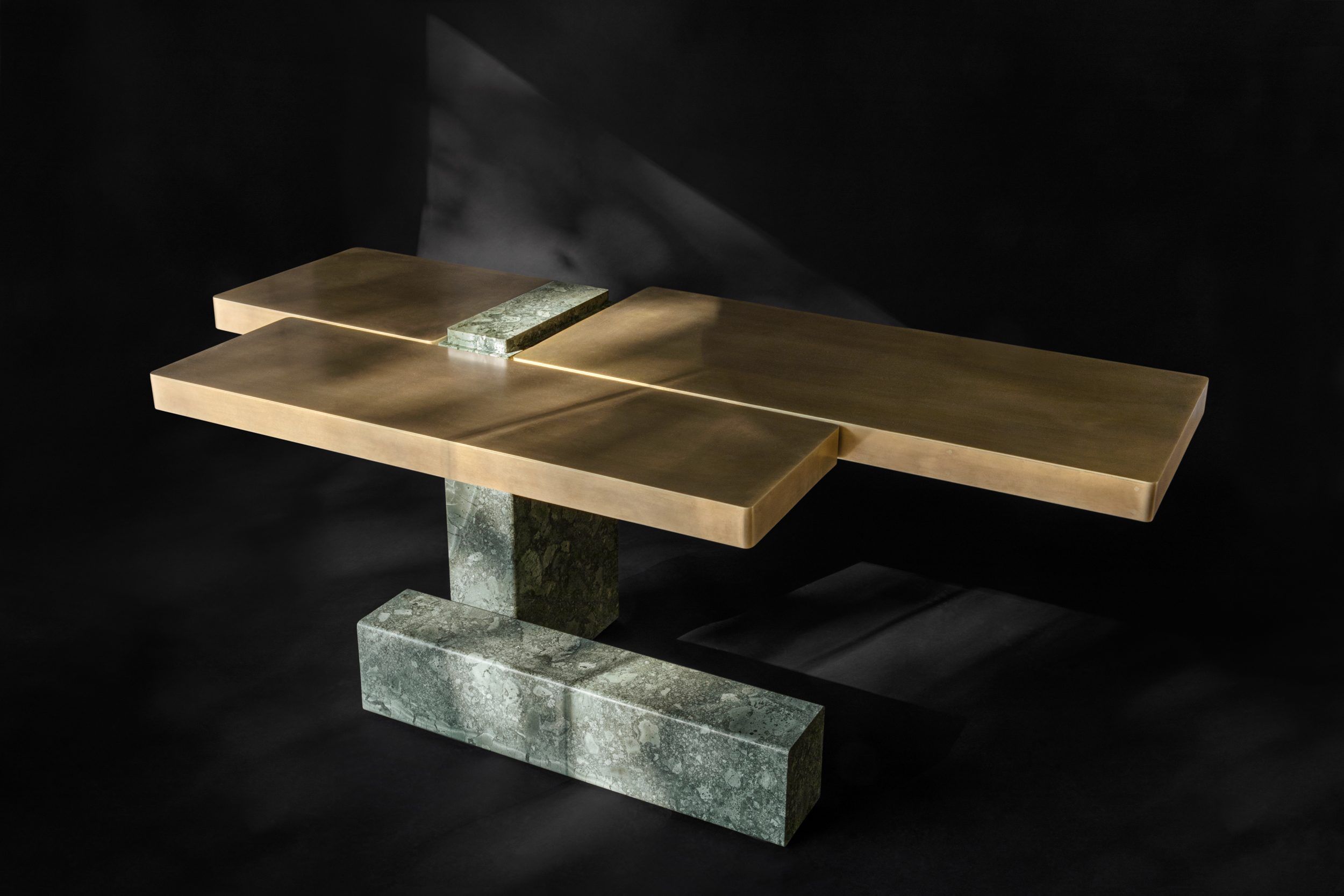Rooted in the foundational principle of repetition, the Frecuencia Light Sculptures use bent steel bars—layered with subtle depth and offset—to shape negative space. These voids act as vessels for light, transforming the structure into an ethereal presence. As light passes through, it casts shadows and halos, creating a quiet suggestion of aura—a kind of vibrational divinity that radiates from the objects themselves.
Rather than simply emitting light, the sconces materialize it. They become atmospheric instruments—manifesting a cadence of form and illumination that dissolves the line between object and presence. Within the broader Frecuencia Collection, they continue the exploration of rhythm, repetition, and the subtle power of sculptural light.
A series of sculptural and architectural structures composed of continuous metal grids—crafted in brass or iron—each designed to hold one or more candles.
As the candles burn, melting wax drips and gathers within the lattice, creating an organic, unpredictable, and evocative formation. Over time, the accumulation of wax becomes a transient presence—ever-changing and alive—shifting the work’s appearance with each use.
A series of sculptural and architectural structures composed of continuous metal grids—crafted in brass or iron—each designed to hold one or more candles.
As the candles burn, melting wax drips and gathers within the lattice, creating an organic, unpredictable, and evocative formation. Over time, the accumulation of wax becomes a transient presence—ever-changing and alive—shifting the work’s appearance with each use.
An exploration around the journey of light as expressed through metal surfaces, this work symbolically evokes the beginning and the end, light and darkness, dusk and dawn, tension and flexion. It is also inspired by Félix Candela’s hyperbolic paraboloid structures.
The poetry of shadow — the absence of light — is always as meaningful as its presence. In every iteration, light is contained and shaped by metal: in scale, surface, and expression. The form of each piece lends a distinct architectural quality to the sculpture.
An exploration around the journey of light as expressed through metal surfaces, this work symbolically evokes the beginning and the end, light and darkness, dusk and dawn, tension and flexion. It is also inspired by Félix Candela’s hyperbolic paraboloid structures.
The poetry of shadow — the absence of light — is always as meaningful as its presence. In every iteration, light is contained and shaped by metal: in scale, surface, and expression. The form of each piece lends a distinct architectural quality to the sculpture.
An exploration around the journey of light as expressed through metal surfaces, this work symbolically evokes the beginning and the end, light and darkness, dusk and dawn, tension and flexion. It is also inspired by Félix Candela’s hyperbolic paraboloid structures.
The poetry of shadow — the absence of light — is always as meaningful as its presence. In every iteration, light is contained and shaped by metal: in scale, surface, and expression. The form of each piece lends a distinct architectural quality to the sculpture.
The Gear Side Tables Draw its inspiration from honeycomb cardboard—typically used for structural reinforcement—the tables reinterpret the aleatory vertical striations revealed when the material is cut, translating them into cast aluminum and bronze. The result is a rich interplay of texture, tone, and geometry.
The side tables present a rational an rectilinear expression. Their silhouette and layered composition maintain the essence of the Gear series while asserting a distinct architectural presence.
Bold in proportion and finely executed, the pieces evoke oversized mechanical ornaments, scaled architectural fragments, or abstracted jewelry. Part of the broader Gear series—which includes a table, a desk, and lighting sculptures—these side tables exist at the intersection of utility and poetry, precision and spontaneity. More than functional objects, they are contemplative pieces that shift with the light and subtly transform their surroundings.
The Gear Side Tables Draw its inspiration from honeycomb cardboard—typically used for structural reinforcement—the tables reinterpret the aleatory vertical striations revealed when the material is cut, translating them into cast aluminum and bronze. The result is a rich interplay of texture, tone, and geometry.
The side tables present a rational an rectilinear expression. Their silhouette and layered composition maintain the essence of the Gear series while asserting a distinct architectural presence.
Bold in proportion and finely executed, the pieces evoke oversized mechanical ornaments, scaled architectural fragments, or abstracted jewelry. Part of the broader Gear series—which includes a table, a desk, and lighting sculptures—these side tables exist at the intersection of utility and poetry, precision and spontaneity. More than functional objects, they are contemplative pieces that shift with the light and subtly transform their surroundings.
The Frecuencia Bench is constructed from a singular silhouette, articulated through subtle variations in height and length that introduce both structural clarity and visual cadence. Formed from continuous bent steel bars, the bench vibrates visually along its span—its polished surfaces reflecting light in shifting patterns, giving the impression of a form in flux or gently dissolving.
Repetition becomes the defining gesture: the multiplied linear elements shape the bench’s volume while evoking a sense of perpetual motion—an endless, functional vibration rendered visible. Negative space plays a vital role, allowing the form to breathe and the rhythm to resonate in its surroundings.
Part of the Frecuencia Collection, the bench extends the series’ exploration of movement, light, and sculptural presence—where function is inseparable from a deeper expression of rhythm and material poetry.
